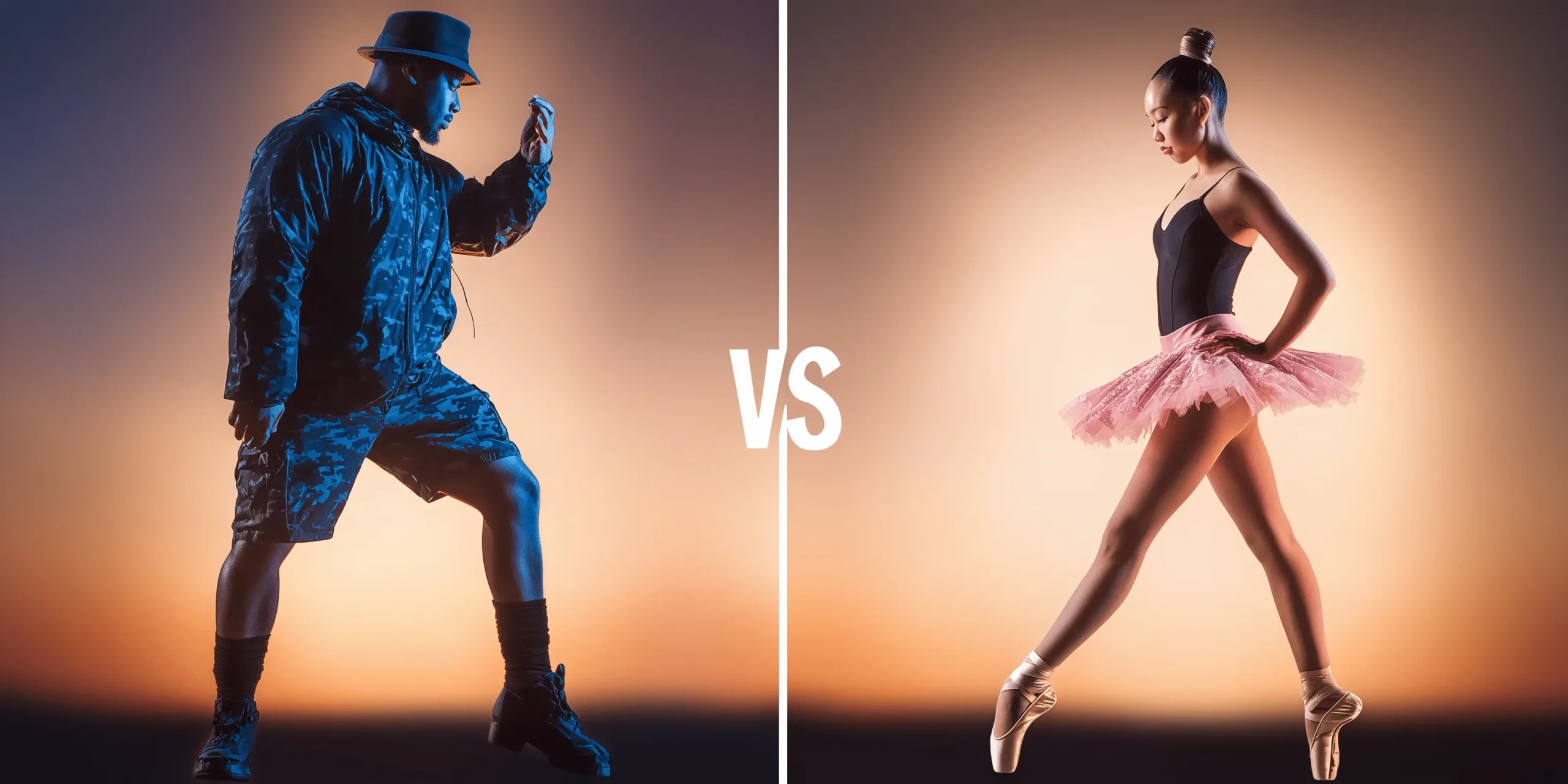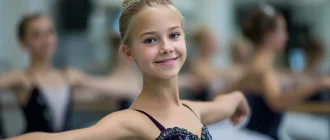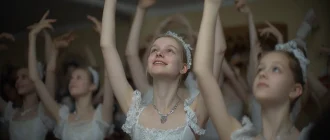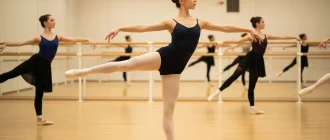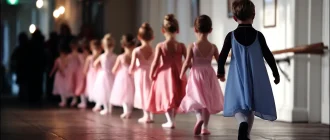Dance clash: Deciding between a ballet class and hip hop? This article breaks down the main differences between Ballerina and Hip Hop. Ballet is precise and traditional, while hip-hop is energetic and expressive. We’ll compare origins, techniques, and what each dance style requires, helping you choose the one that best suits you.
Graceful Insights
- Ballet and hip-hop have contrasting origins. Ballet is steeped in historical elegance, while hip-hop is rooted in vibrant street culture. Each reflects a unique cultural identity.
- Training for Ballet demands discipline and technical precision, while hip-hop emphasizes creativity and personal expression. Their choice depends on individual preferences and the variety of dances they encompass.
- Both dance styles have a significant cultural impact. Ballet inspires classical arts, while hip-hop shapes contemporary culture. Both offer youth a platform for self-expression and identity.
Audio Podcast
The Origins of Ballet and Hip Hop
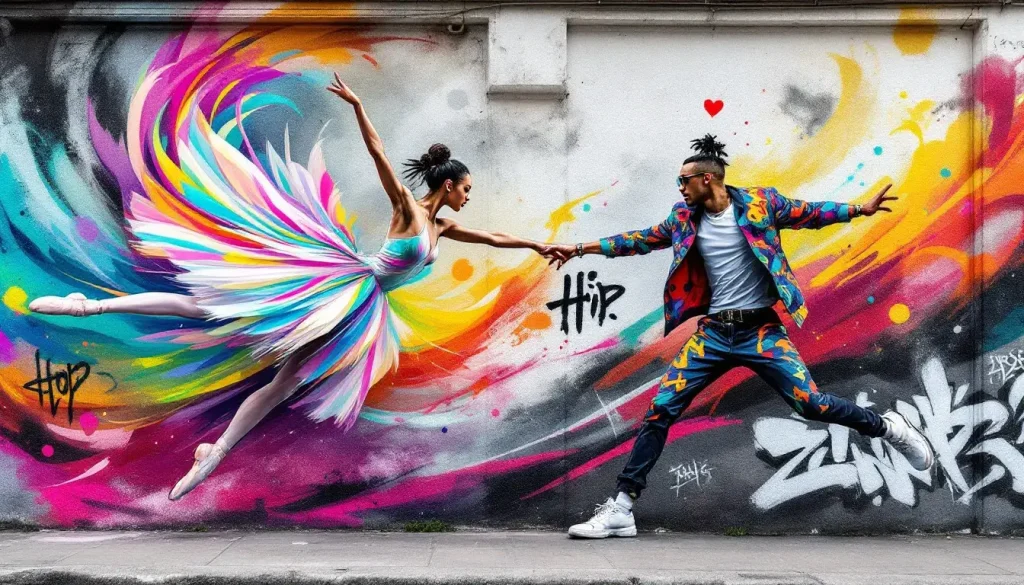
The origins of Ballet and hip-hop present a striking contrast, much like their dance moves. Ballet traces its roots back to the Renaissance courts of Italy and France, where it evolved into a sophisticated art form characterized by elegance and precision. This historical dance form was initially a part of court entertainment during the Italian Renaissance and further developed in France and Russia into what we now recognize as classical Ballet. Over the centuries, Ballet has continued to evolve, integrating modern storytelling and diverse cultural narratives into its performances, making it relevant to contemporary audiences.
Hip-hop dance, in contrast, emerged in the vibrant streets of the Bronx during the 1970s. This energetic and expressive dance style was born within African American and Latinx communities, emphasizing personal expression and cultural identity. Influenced by African dance movements, hip-hop dance began in informal street settings, gaining momentum through block parties and DJ performances.
The cultural movement was propelled by figures like Kool DJ Herc, who innovated dance transitions by extending musical segments to create seamless transitions. Today, hip-hop culture has permeated mainstream media, influencing the fashion, language, and lifestyle of younger generations.
Classical Ballet History
Classical Ballet’s journey from the Italian Renaissance courts to the grand stages of France and Russia is a testament to its enduring appeal. The establishment of the Académie Royale de Danse in 1661 marked a significant step in formalizing ballet techniques and preserving the rich heritage of the art form. This period saw the rise of notable figures, such as Jean-Georges Noverre, who popularized ballet d’action —a theatrical dance form that combined movement with narrative. Ballet performances are known for their strict structure and stylized movements, often set to classical music, which enhances storytelling and emotional expression.
The 19th century was a golden era for Ballet, with the art form gaining immense popularity worldwide. Iconic dancers like Marie Taglioni became synonymous with Ballet’s grace and precision, captivating audiences with their performances in competition and competing for the golden trophy.
The influence of classical Ballet extends beyond the stage, impacting various art forms and inspiring generations of dancers, choreographers, and artists. Even today, the principles of classical Ballet are foundational in modern dance education, ensuring its legacy continues.
Emergence of Hip-Hop Dance
The emergence of hip-hop dance is deeply rooted in the hip-hop postural and social dynamics of the 1970s Bronx. This dance form evolved from a vibrant community characterized by block parties and DJ performances, which set the stage for breakdancing and other hip-hop dance styles. The integration of hip-hop into mainstream media, through films and television, has helped popularize the dance form, making it a significant part of contemporary culture. Hip hop’s rise is also credited to its innovative expressions and connection to urban culture, which resonated with many young people seeking a platform for self-expression.
As hip-hop gained popularity, its East Coast and West Coast styles developed distinct characteristics, eventually merging into a singular street dance culture. This inclusive environment celebrated diversity and creativity, allowing hip-hop dancers to bring their unique flair and personality to the dance floor.
Hip-hop culture has a profound influence on music, fashion, and art, serving as a vehicle for social commentary among young people.
Key Differences in Technique and Style
Hip hop’s differences in dance, technique, and style are striking. Ballet is renowned for its structured techniques, which demand extensive training, emphasizing precision, form, and grace. The physical demands of Ballet are significant, necessitating hip-hop practice to build strength, flexibility, and endurance. This disciplined approach is evident in the controlled movements that characterize ballet performances.
In contrast, hip hop dance is all about rhythm, musicality, and personal expression. Hip hop dancers often emphasize dynamic and energetic movements, reflecting their style and creativity. Unlike Ballet, which thrives on precision and form, hip hop allows for freedom and improvisation, making each performance unique. The various styles within hip hop, such as breaking, locking, and popping, offer a diverse range of movements and rhythms that celebrate the dancer’s flair. The
Ballet Techniques and Grace
The technical ski is developed through centuries of refinement, much like the comparison between ballet and hip hop. Ballet techniques often convey stories through choreographed movements, requiring dancers to perform with grace and precision. Pointe shoes, a unique element of Ballet, enable dancers to perform on the tips of their toes, enhancing the elegance of their movements. Ballet dancers are renowned for their graceful and elegant movements, which are achieved through rigorous training and strict adherence to technique.
Ballet training emphasizes strength, flexibility, and control, with a focus on the graceful execution of complex movements. Its technical precision and artistic expression make it a demanding yet rewarding dance form.
The grace and elegance of Ballet are not just about physical skills but also about conveying emotions and stories through dance.
Hip Hop Dance Moves and Freedom
Hip-hop dance is characterized by its dynamic and energetic movements, which allow dancers to connect their movements with the beats of the music. This dance form emphasizes rhythm and musicality, allowing dancers to express their creativity and style. The freedom of hip-hop dance allows for a wide range of physical engagement, from intricate footwork to powerful body movements.
The various styles within hip hop, such as breaking, locking, and popping, each have unique movements and rhythms that reflect the individuality of the dancer. The emphasis on personal flair and improvisation makes hip-hop a versatile and expressive dance form.
Many dancers are drawn to hip-hop because of this freedom and creativity, making each performance a unique and personal expression of the dancer’s artistry.
Performance and Presentation
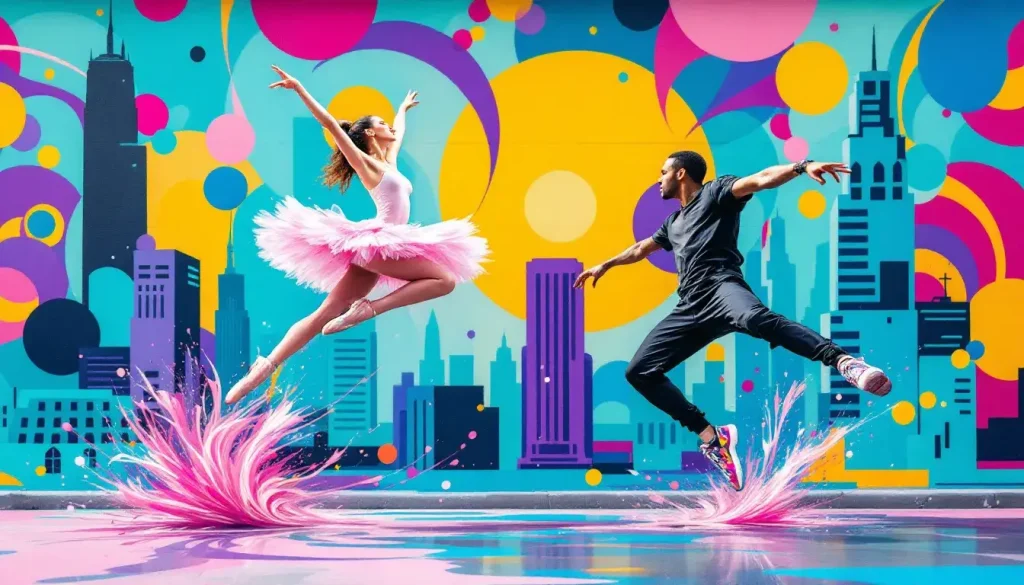
The performance and presentation styles of ballet and hip hop offer contrasting experiences for both dancers and audiences. Ballet performances feature structured formats, precise choreography, and traditional settings. Emphasis on elegance and grace results in visually stunning performances that showcase the technical skills of ballet dancers.
Conversely, hip-hop shows are vibrant and energetic, capturing the dynamic essence of street dance culture. These performances often incorporate rap music, emphasizing creativity and spontaneity. The excitement of a dance clash, where players can join either ballet or hip-hop teams, showcases the competitive nature of performances while forming friendships and expressing individual creativity through dance. Collaborative and improvisational elements in hip-hop create unique performances that are both fun and engaging for audiences, making them dynamic.
Ballet Performances
Ballet performances combine choreography, costumes, and classical music to create a cohesive and visually stunning experience. The structured choreography highlights the dancers’ technical skills and formalized movements. Elaborate costumes, often featuring tutus and pointe shoes, enhance the visual spectacle and reflect the story and characters of the performance.
Classical music often accompanies Ballet, complementing its grace and storytelling. Ballet performances are known for their elegance and precision, captivating audiences with their artistic beauty and technical mastery.
Hip Hop Shows
Hip-hop shows are known for their high energy and dynamic choreography, reflecting the vibrant culture of street dance. The integration of rap music provides a rhythmic backdrop that enhances the performance’s intensity and engagement. The costumes worn in hip-hop shows and videos are often bold and colorful, reflecting street culture and adding to the visual impact of the performance.
Collaboration within dance crews is a hallmark of hip-hop, where collective creativity and shared experiences contribute to the development of unique dance routines. The improvisational elements and vibrant energy of hip-hop shows create an unforgettable experience for dancers and audiences, highlighting the creativity and spontaneity of the dance form.
Training and Practice Regimens
Ballet and hip-hop dance training and practice regimens differ significantly, reflecting the unique demands of each dance style. Ballet training is recognized as one of the most physically demanding forms of dance, requiring a unique combination of strength, flexibility, and technical precision. Ballet dancers typically undergo rigorous training schedules, often practicing for 20 to 30 hours per week to perfect their skills.
On the other hand, hip-hop practice emphasizes informal and freestyle methods, allowing dancers to explore their styles and creativity. While ballet training focuses heavily on structured techniques, hip-hop practice often involves improvisation and collaboration within dance crews. This contrast in training approaches highlights the different physical demands and commitments required for each dance style.
Ballet Training
Ballet dancers typically engage in daily practice sessions that can last several hours, emphasizing precision and control. Ballet training normally begins with exercises at the barre, focusing on developing strength, flexibility, and proper alignment. This structured approach ensures that dancers build a strong foundation in technique, which is essential for executing the intricate movements of Ballet.
Strength training has also become a crucial component of ballet training regimens, enhancing muscle torque and improving balance, both of which are essential for executing complex movements. Professional ballet dancers must exhibit high levels of overall flexibility, particularly in the hips and legs, to maintain their aesthetic form and perform movements such as turnout.
Ballet training’s immense physical demands require dedication and discipline to achieve the art form’s characteristic grace and precision.
Hip Hop Practice
Hip-hop often emphasizes informal and freestyle methods, allowing dancers to explore their styles and creativity through improvisation. Improvisation, a key element in hip-hop, enables dancers to express creativity and adapt movements in real-time. This informal approach to practice often includes sessions where dancers collaborate and share techniques in a supportive environment.
Hip-hop practice regimens reflect the vibrant energy and improvisational elements of performances, where dancers hone their skills through collaboration and experimentation. This emphasis on personal expression and creativity makes the game of hip-hop practice a dynamic experience, allowing dancers to develop their unique styles and routines.
Cultural Impact and Popularity
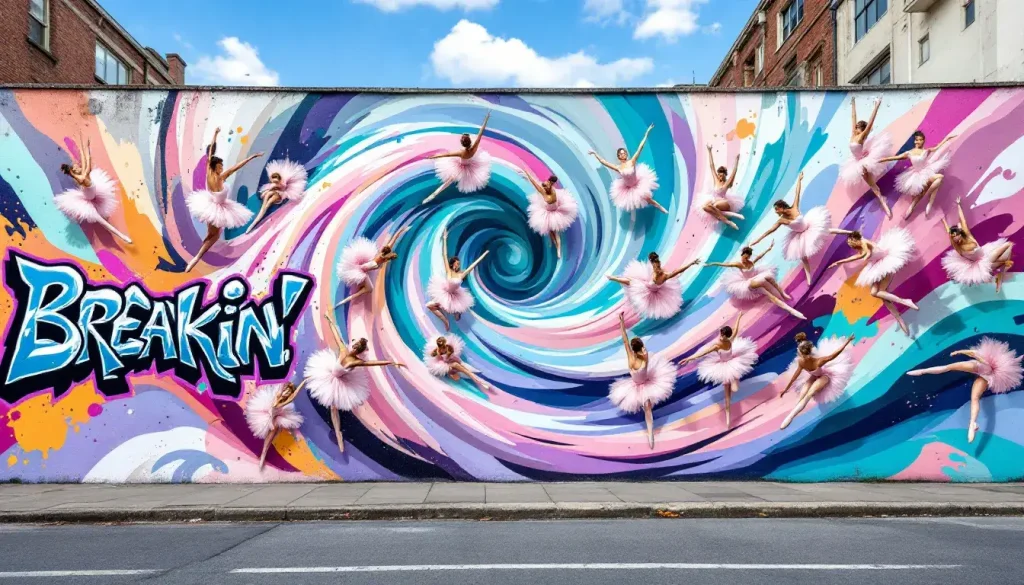
Ballet and hip hop each have profound cultural impacts that reflect the societal changes and influences of their respective eras. Ballet has significantly shaped the artistic landscape, influencing theater, film, and contemporary dance forms. Its principles are foundational in training for many dance genres, ensuring its legacy continues in modern dance education. Ballet’s influence extends beyond the stage, inspiring generations of dancers, choreographers, and artists in various art forms.
Conversely, hip-hop culture has gained widespread appeal due to its innovative expressions and connection to urban culture. As hip-hop’s distinct East Coast and West Coast styles merged, the dance form created an inclusive environment celebrating diversity and creativity. The thrilling ‘dance clash’ between ballet and hip-hop teams showcases the competitive nature and cultural significance of these dance styles, emphasizing the excitement of competing while forming friendships and expressing individual creativity through dance.
Hip-hop has a profound influence on youth, offering a platform for self-expression and identity that is prominently showcased in the media. The rise of hip-hop culture has profoundly shaped music, fashion, and art, serving as a vehicle for social commentary among younger generations.
Influence of Classical Ballet
The classical Ballet has had an immense influence on the performing arts. It gained popularity in the 19th century with the rise of famous dancers, such as Marie Taglioni. Ballet’s elaborate costumes and classical music enhance the visual spectacle of performances, reflecting the story and characters. Classical ballet principles are foundational in many dance genres, ensuring their legacy in modern dance education.
Classical Ballet has maintained a significant presence in the arts, influencing theater, film, and contemporary dance forms in many ways. Its impact on various art forms has inspired generations of dancers, choreographers, and artists across different genres, highlighting its enduring legacy.
Rise of Hip-Hop Culture
The rise of hip-hop culture is a testament to its innovative expressions and connection to urban life. Over time, the East Coast and West Coast styles of hip-hop developed distinct characteristics, merging into a singular street dance culture as their popularity grew. This inclusive environment celebrated diversity and creativity, allowing hip-hop dancers to bring their unique flair to the dance floor.
Hip-hop’s profound influence on youth provides a platform for self-expression and identity. Its widespread appeal is evident in its impact on music, fashion, and art, making it a significant part of contemporary culture. The rise of hip-hop culture has shaped various art forms and served as a vehicle for social commentary among younger generations.
Choosing Your Dance Style
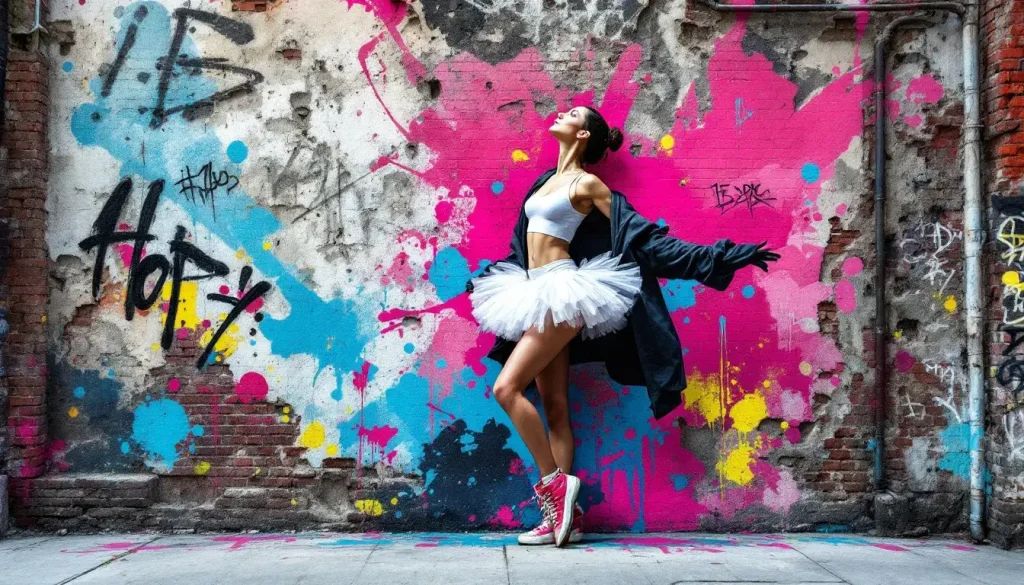
Choosing between Ballet and hip-hop dances hinges on personal preferences and physical demands. Ballet prioritizes discipline and technical precision, requiring extensive hours of practice to master technique and form. In contrast, hip-hop emphasizes freedom and personal expression, offering more flexibility in movement and improvisation. Ballet’s structured techniques appeal to those who appreciate elegance and precision, while hip-hop’s dynamic and creative nature attracts those seeking energetic and spontaneous dance styles.
Evaluating personal preferences is crucial when choosing a dance style. Ballet’s emphasis on elegance, precise technique, and structured performances may appeal to those who enjoy a formal and disciplined approach to dance. Conversely, hip hop’s focus on freedom of expression, fluid movements, and spontaneous performances may resonate with those who prefer a more informal and collaborative dance experience.
Assessing Personal Preferences
Assessing personal preferences is crucial when choosing between Ballet and hip-hop. Ballet emphasizes elegance and requires precise technique, form, and grace to convey emotions. Performances are highly structured and feature classical music, tutus, and carefully choreographed routines. Ballet might be your choice if you appreciate a dance style that combines discipline with artistic expression.
Conversely, hip-hop dance prioritizes freedom of expression, fluid movements, and an emphasis on individuality and creativity. Its informal and freestyle nature allows dancers to improvise and collaborate, encouraging spontaneous performances. Hip-hop might be your perfect match if you enjoy a dance style that celebrates personal flair and improvisation.
Considering Physical Demands
It’s also important to consider the physical demands of each dance style. Ballet training focuses on developing strength, flexibility, and precision, requiring extensive hours of practice to master technique. Ballet’s strict alignment and controlled movements demand high physical fitness and dedication. Ballet may suit those who seek a structured form of dance that emphasizes technical skills and disciplined practice.
Hip-hop dancing emphasizes a different kind of physical fitness, focusing on strength, endurance, and agility for dynamic movements. The freedom and personal expression in hip-hop result in varied physical engagements, making it a versatile, athletic, and energetic dance style. If you prefer a dance style that allows for energetic and improvisational movements, a hip-hop dancer might find that hip-hop is the right fit for you.
Resume
In summary, the dance world offers a rich tapestry of dances, each with unique charm and demands. With its roots in the Renaissance courts, Ballet brings a sense of elegance and precision, captivating audiences with its structured techniques and graceful performances. On the other hand, hip-hop dance, emerging from the vibrant streets of the Bronx, offers dynamic and energetic movements that celebrate personal expression and creativity. Both dance styles have significantly influenced various art forms and continue to inspire new generations of dancers.
Choosing between Ballet and hip hop ultimately depends on your preferences and physical strengths. Whether you are drawn to Ballet’s disciplined elegance or hip hop’s spontaneous freedom, both dance forms offer a rewarding experience. Embrace the style that resonates with you and let your passion for dance guide you on an exciting journey of self-expression and artistic growth.

